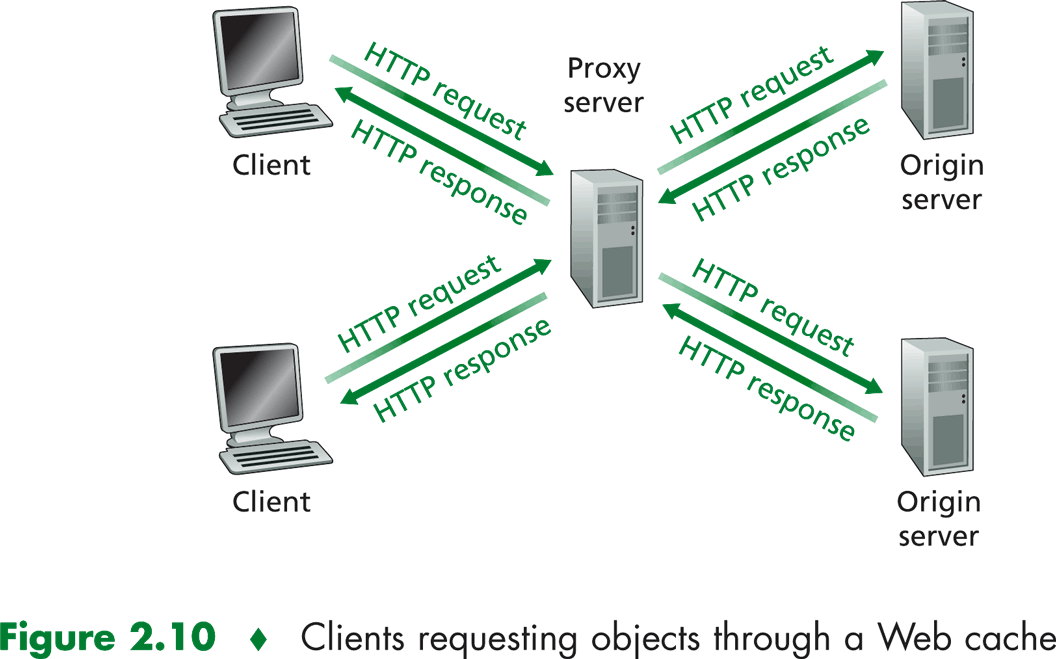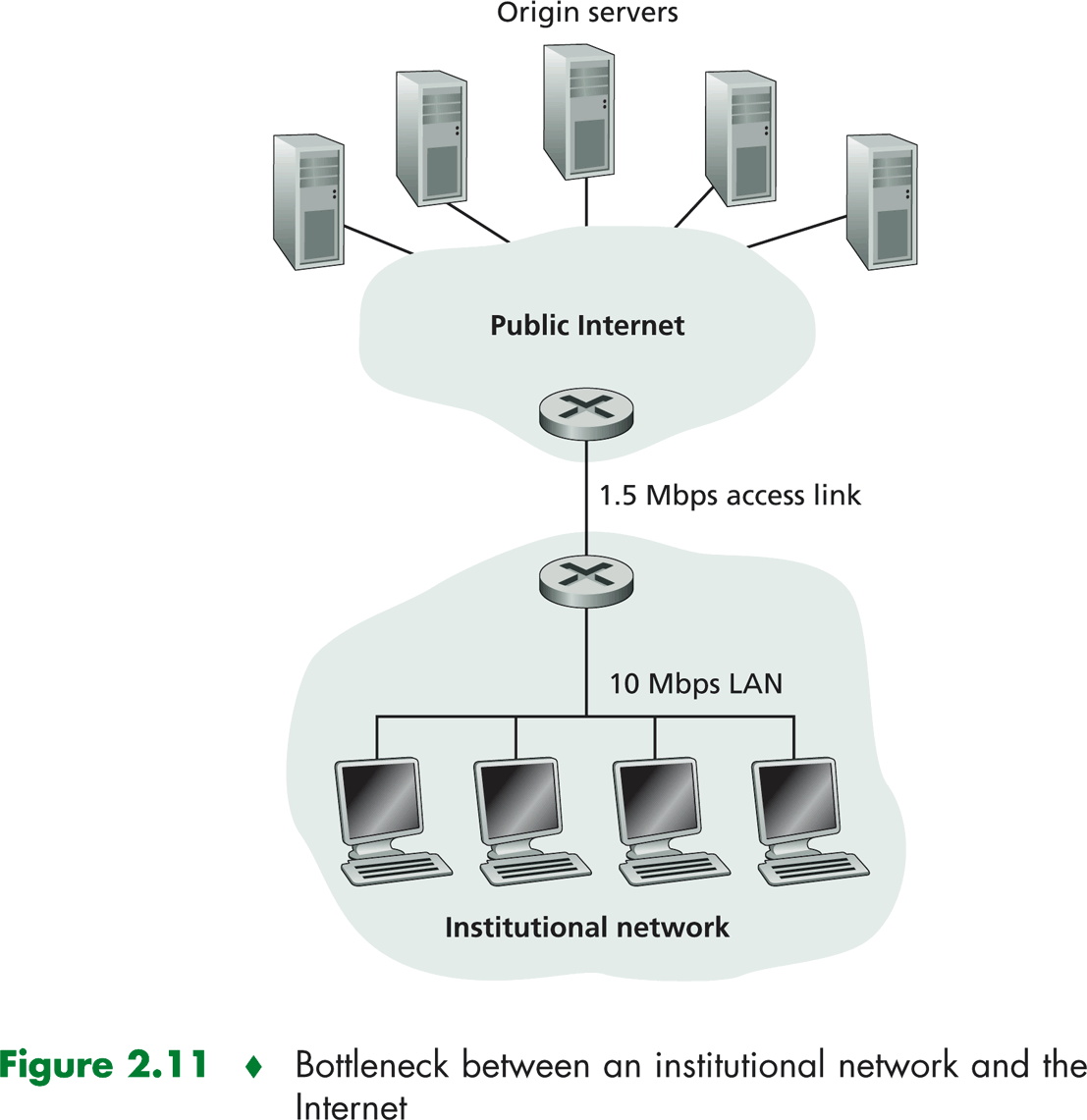|
A Web-cache--also called a proxy server--is a network entity that satisfies HTTP requests
on the behalf of an orgin Web server. The Web cache has its own disk storage and keeps copies of recently requested
objects in this storage. A user's browser can be configured so that all of the user's HTTP request are first directed
to the Web cache. Once a browser is configured, each browser request for an object is first directed to the Web cache.
A cache is both a server and a client at the same time. When it receives requests from and sends responses to a
browser, it is a server. When is sends requests to and receives responses from an origin server, it is a client.

Web caching has seen development in the Internet for two reasons:
- A Web cache can substantially reduce the response time for a client request, particularly if the bottleneck bandwidth
between the client and the origin server is much less than the bottleneck bandwidth between the client and the cache.
- Web caches can substantially reduce traffic on an institution's access link to the Internet. By reducing traffic,
the institution does not have to upgrade bandwidth as quickly, thereby reducing costs. A Web caches can substantially
reduce Web traffic in the Internet as a whole, thereby improving performance for all applications.

|



